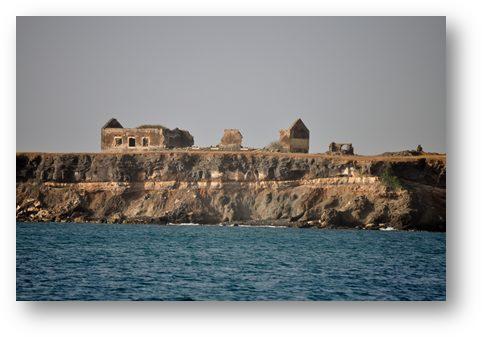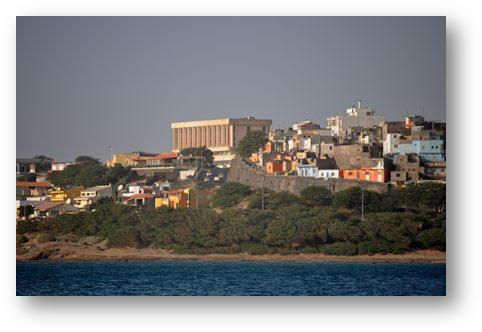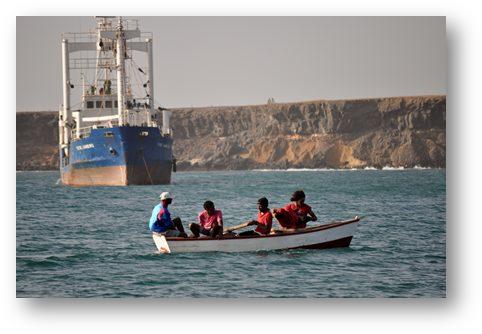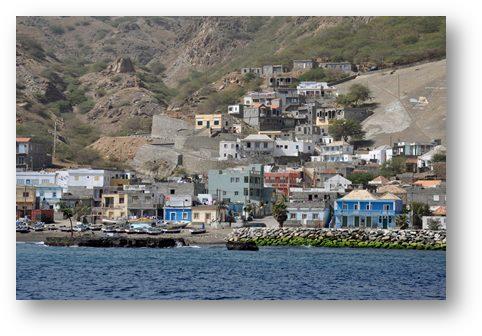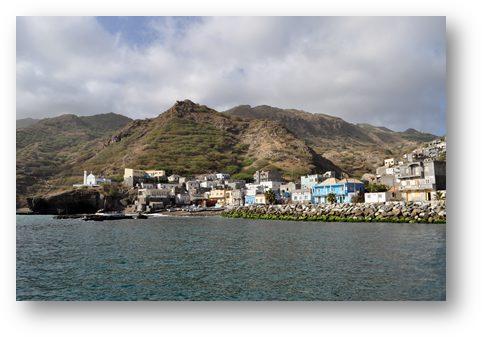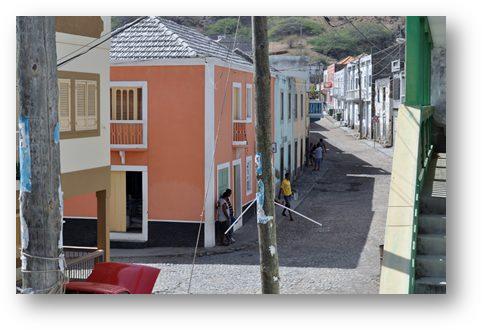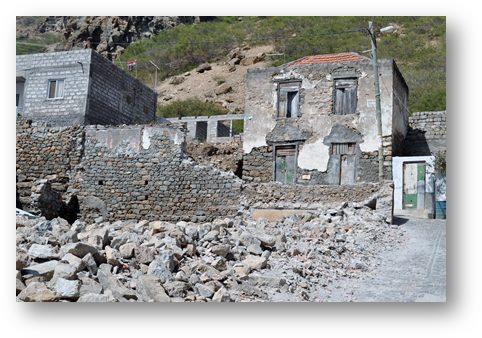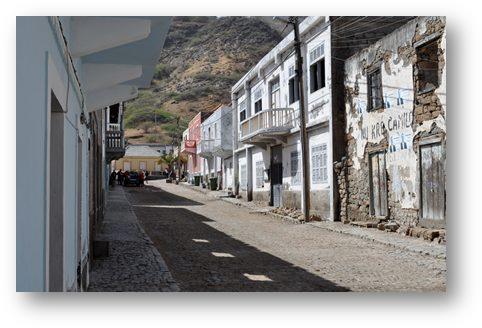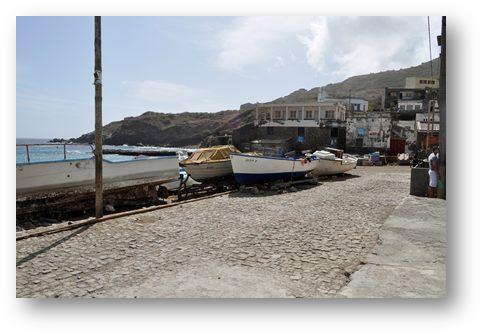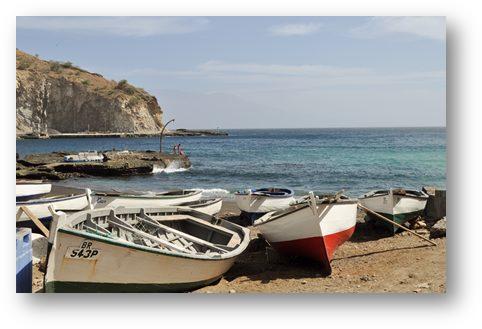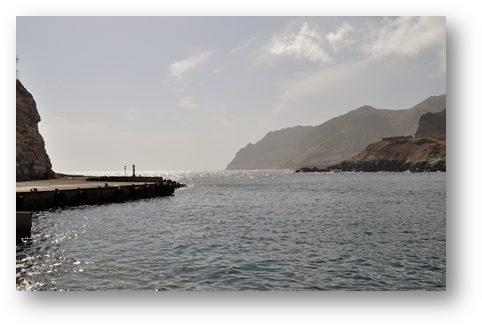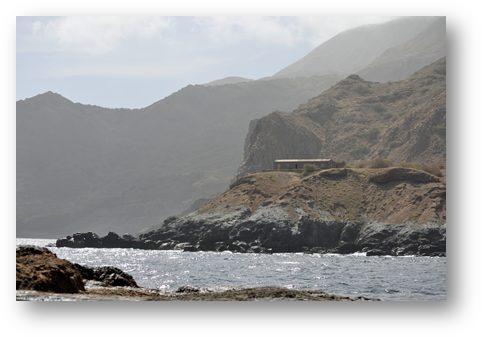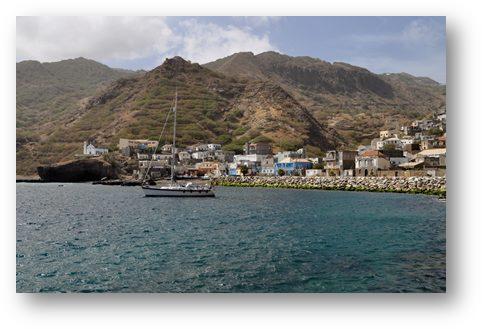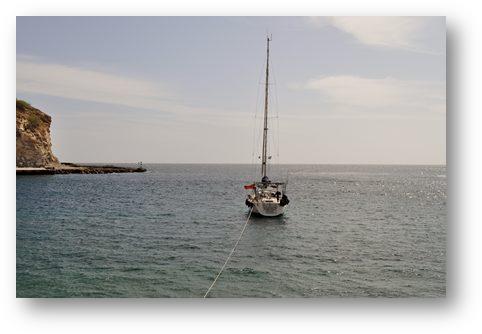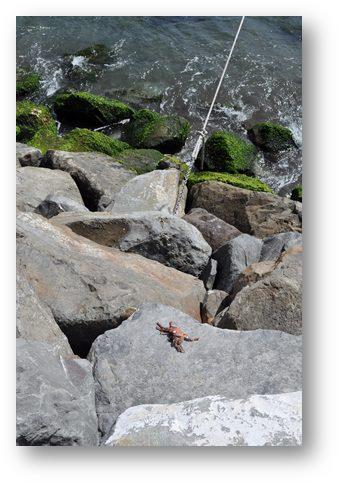Brava

Position: 14:47.89N 24:20.40W Date: Sunday 30th December 2012 Time: 11:30am As expected we didn’t spend too long in Praia. The town was OK, but the anchorage was a fair way away, near to the main docks and fishing harbour, and it seemed to be the place where all of the panhandlers, hasslers and other ‘money gimmes’ were based. We didn’t feel confident to leave the boat unattended at any time, and there are not too many pictures to show as I didn’t want to walk around with an expensive camera on view. Here are the few pictures I took from the boat.
We upped anchor and set sail for the island of Brava on Friday 28th at around 3:00am in the morning. This was as late as we could leave it to ensure a daylight arrival in Brava. Brava is the most south westerly island in the Cape Verdes and beyond there is open ocean until the Americas and the Caribbean. It was also the first time in our journey so far that we had ‘turned right’ and headed in a westerly direction. It was an eventful journey starting off with a fair sailing wind, until we entered the wind shadow cast by the island of Santiago. After a couple of hours motoring the wind returned and slowly increased throughout the day. In order to get to Brava we had to pass another island called Fogo. This is an active volcano, precipitously steep and nearly 3,000m metres high. Wind behaves much like flowing water and rather than pass over the top of such an obstacle it will rush around its edges, just like water passing a boulder in a mountain stream. This creates what is known as an acceleration zone around the island, where the wind speed is considerably higher than that away from the island. Well we encountered an acceleration zone. As we approached the SE part of Fogo the wind gradually increased to a steady 36 knots with gusts over 42 knots. The strain on the boats rig and sails was considerable and I was quite concerned that something would break. Fortunately everything held together OK. As we passed just south of the island we were quite suddenly in a wind shadow with not enough wind to sail. It was as though someone had flicked a big switch. As we looked back we could see a line of white water, beyond which the winds were still howling. But in our small bubble of tranquillity the seas were flat, and the most brilliant indigo. And then a large pod of dolphins appeared, maybe 50 or so together and at the same time, quite close by, a smaller pod of pilot whales with their sleek black colouring and distinctive hooked dorsal fin. After the earlier turbulence it was all a little surreal. At around 16:30 we were getting close to the island of Brava, and our chosen anchorage in Porto da Furna. But looking at the island from about 1 mile off we just couldn’t see the entrance to the harbour, and the radar showed little more than a small indentation in the high cliffs with the seas breaking all around. We carried on carefully, with a keen eye on the depth and looking ahead for rocks. As we got closer a narrow entrance became clearer and we sailed in to find a circular harbour with steep cliffs all around. There was one other yacht in the port, which was a good thing as it was not big enough for more than 3 or 4 boats in the most sheltered part of the bay. The owners were French and they were very helpful in taking a stern line ashore in their dinghy so that we could tie back, Mediterranean style. Despite making a complete pig’s ear of the process, we did eventually settle down and start to feel the adrenalin of the passage ebb away. The harbour is actually the sunken caldera of an extinct volcano, where the sea has breached the outer wall. Here are some pictures of the waterfront:
And here are a few more of other parts of the village. I couldn’t help thinking that this was what the small fishing villages in the SW of England must have looked like well before they started to cater for tourists.
Here are a couple of pictures of the narrow entrance:
And here are some more of Ocean Gem at anchor in the bay, with a stern line tied back to the shore, so that we didn’t swing around the anchor and get in the way of the small ferry that comes in every day.
Whilst we were in Brava we were offered considerable help by Alberto. He acted as translator (Portuguese to French) when talking to the harbour master, helped with lines and dinghy trips ashore. If ever you are in the town and need some help then Alberto is the man. Here he is:
Our first night (Friday) was peaceful and the walk ashore the next day showed the town to be quite lovely. I remember wondering how the topography managed to keep the rough seas outside of the entrance from sending a surge into the harbour. We made plans to stay till the New Year and to take a tour of the island. However our second night ( Saturday) showed that the protection offered was not as remarkable as we had first thought. Phil and I were up on anchor watch for a large part of the night as fairly large swell came into the harbour and broke on the shore just 40 metres behind us. Furthermore we judging by the weather forecasts we can expect more of the same for the next few nights. So we have decided that we will leave later today (Sunday 30th) and head out into the Atlantic. So for the next couple of weeks or so the log postings will be brief, and without any photographs to accompany them. We sincerely hope that the winds will be a little gentler than we have experienced in the Cape Verde Islands. |
